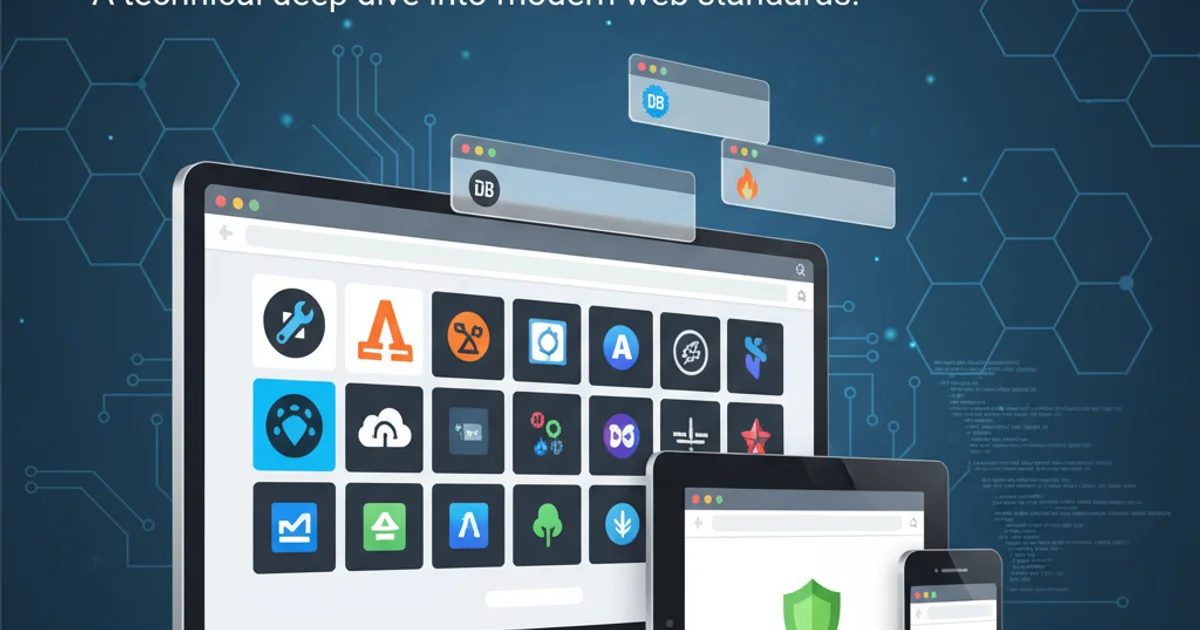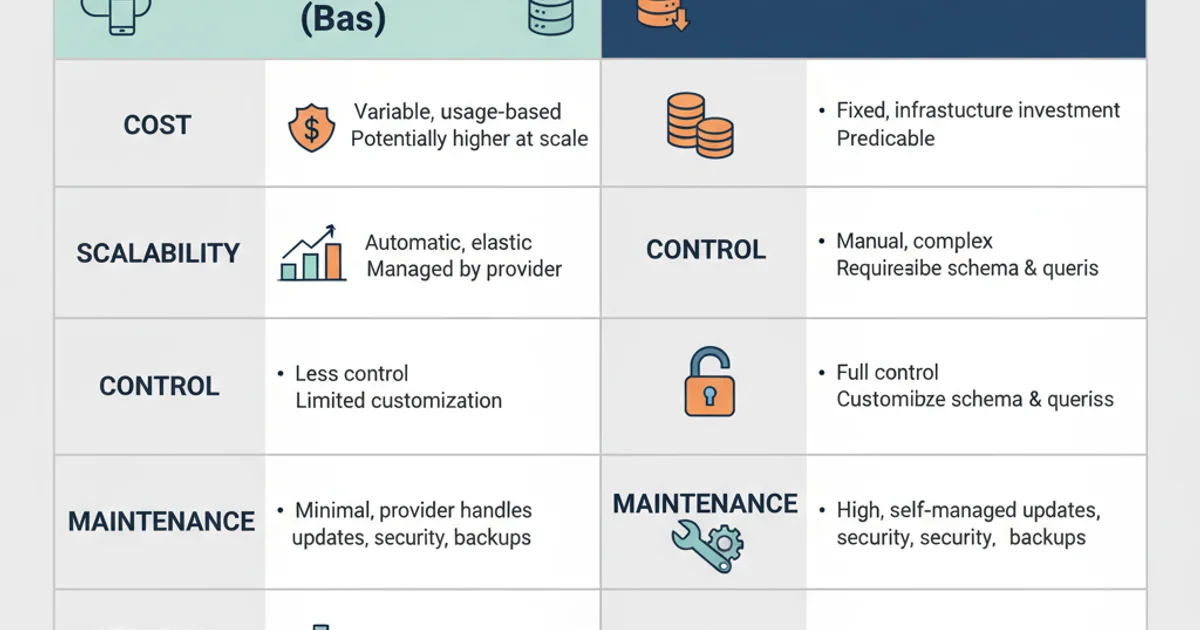Backend as a service (BaaS) or old school SQL server for Mobile APP Remote Database
Categories:
BaaS vs. Traditional SQL: Choosing Your Mobile App's Remote Database

Explore the pros and cons of Backend as a Service (BaaS) platforms versus self-managed SQL databases for mobile application remote data storage, helping you make an informed decision.
When developing a mobile application, one of the most critical architectural decisions is how to manage your remote database. This choice significantly impacts development speed, scalability, maintenance overhead, and ultimately, your app's success. Two primary approaches stand out: leveraging a Backend as a Service (BaaS) platform or opting for a traditional, self-managed SQL server. Each path offers distinct advantages and disadvantages, making the 'best' choice highly dependent on your project's specific requirements, team expertise, and long-term vision.
Understanding Backend as a Service (BaaS)
BaaS platforms provide a ready-to-use backend infrastructure, abstracting away much of the server-side development and operational complexities. They typically offer features like user authentication, real-time databases, push notifications, cloud storage, and API management out-of-the-box. This allows mobile developers to focus almost entirely on the client-side experience, accelerating development cycles. Popular BaaS providers include Firebase, AWS Amplify, and Parse Platform (which can be self-hosted or used via a service). While convenient, BaaS introduces vendor lock-in and can sometimes limit customization options for highly specific or complex backend logic.
flowchart TD
A[Mobile App] --> B{BaaS Platform}
B --> C[User Authentication]
B --> D[Realtime Database]
B --> E[Cloud Storage]
B --> F[Push Notifications]
B --> G[APIs & Cloud Functions]
C & D & E & F & G --> H[Managed Infrastructure]
H --> I[Scalability & Security Handled by BaaS]Typical BaaS Architecture for Mobile Applications
The Traditional SQL Server Approach
Conversely, a traditional SQL server (like MySQL, PostgreSQL, SQL Server, or Oracle) offers complete control over your database infrastructure. This approach requires you to set up, configure, manage, and scale your own database servers, often alongside a custom-built backend API layer (e.g., using Node.js, Python/Django, Ruby on Rails, or Java/Spring Boot). While this demands more upfront development and ongoing operational effort, it provides unparalleled flexibility, customization, and avoids vendor lock-in. It's often favored for complex enterprise applications, strict compliance requirements, or when a highly optimized, bespoke backend is essential.
flowchart TD
A[Mobile App] --> B{Custom Backend API}
B --> C[Authentication Service]
B --> D[Business Logic]
B --> E[File Storage Service]
C & D & E --> F[SQL Database Server]
F --> G[Database Management & Scaling (Self-Managed)]
G --> H[Custom Security & Compliance]Traditional SQL Server Architecture for Mobile Applications
Key Decision Factors
Choosing between BaaS and a traditional SQL server boils down to several critical factors:

Comparative analysis of BaaS vs. Traditional SQL
- Development Speed: BaaS typically offers faster initial development due to pre-built components and managed services. Traditional SQL requires more time for backend API development and database setup.
- Scalability: Both can scale, but BaaS handles scaling automatically, often with a pay-as-you-go model. With SQL, you're responsible for implementing and managing scaling solutions (e.g., replication, sharding).
- Cost: BaaS costs can be unpredictable as usage grows, potentially becoming expensive for high-traffic apps. Traditional SQL has more predictable infrastructure costs but higher operational overhead (staffing, maintenance).
- Control & Customization: Traditional SQL offers maximum control over every aspect of your database and backend logic. BaaS provides less control, relying on the platform's offerings, though many now offer serverless functions for custom logic.
- Vendor Lock-in: BaaS introduces a degree of vendor lock-in, making migration to another platform potentially complex. Traditional SQL, while requiring more initial setup, offers greater portability.
- Security & Compliance: BaaS providers manage much of the infrastructure security, but you're still responsible for application-level security. With SQL, you bear full responsibility for database security, patching, and compliance.
- Team Expertise: BaaS is ideal for mobile-centric teams with limited backend experience. Traditional SQL demands strong backend development, database administration, and DevOps skills.
Hybrid Approaches and Future Trends
It's also worth noting that a hybrid approach is increasingly common. For instance, you might use a BaaS for rapid prototyping and core features like authentication, while integrating a custom backend with a SQL database for complex, data-intensive operations or specific business logic. Serverless functions (like AWS Lambda or Google Cloud Functions) can bridge the gap, allowing custom code execution without managing servers, often complementing both BaaS and traditional setups.
The trend is towards more managed services, even for traditional databases (e.g., AWS RDS, Azure SQL Database), which reduce the operational burden of self-hosting while retaining much of the control. This blurs the lines between pure BaaS and pure self-managed SQL, offering a spectrum of options.
Ultimately, the decision should align with your project's unique constraints and goals. For startups and MVPs, BaaS often provides the speed needed to get to market. For established applications with specific requirements or large-scale data operations, the control offered by a traditional SQL server, possibly augmented by managed database services, might be the more robust and cost-effective long-term solution.